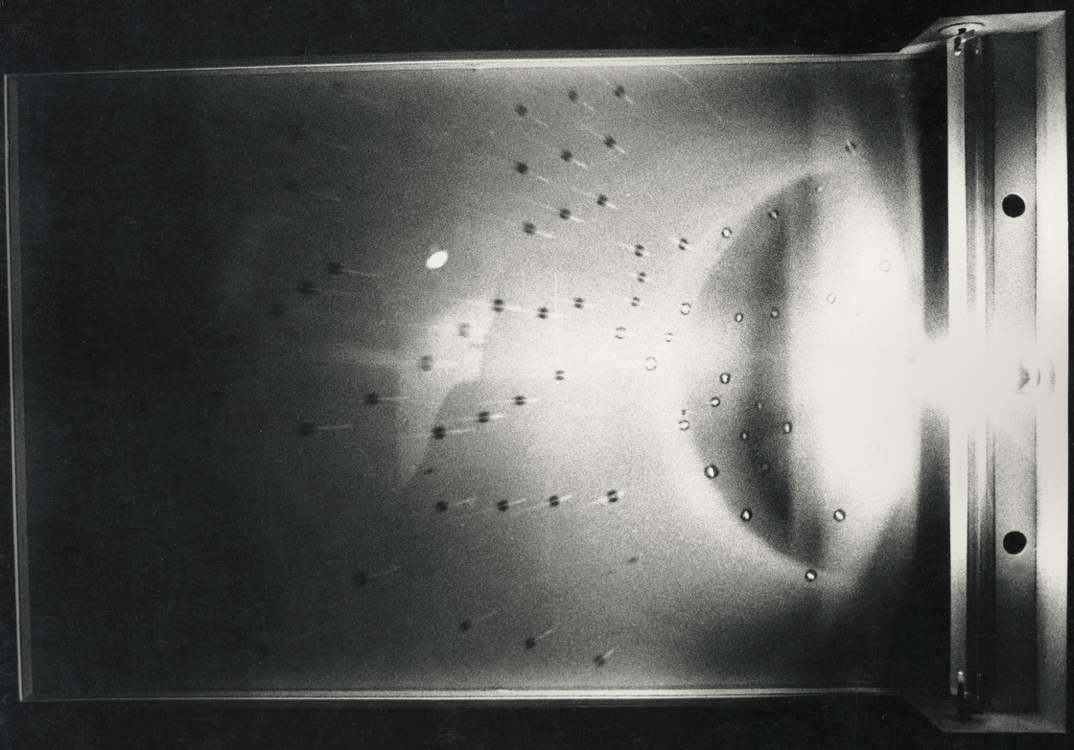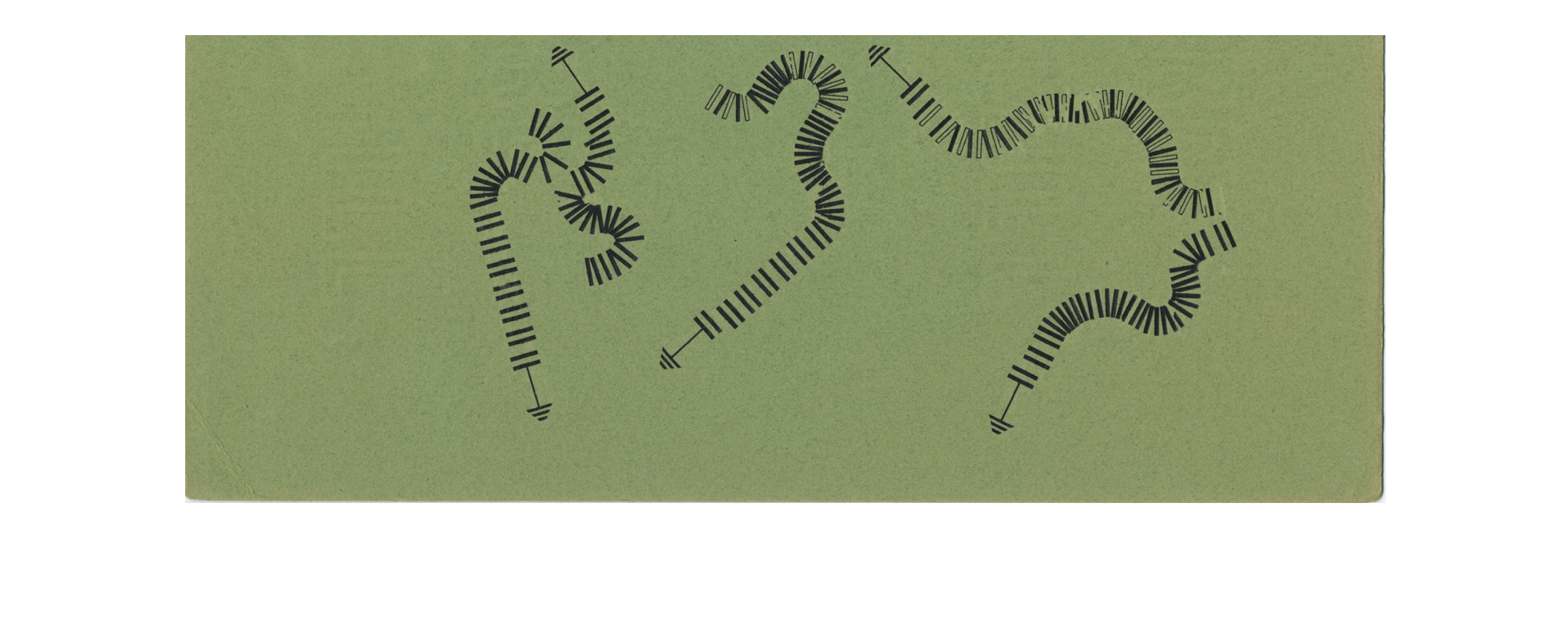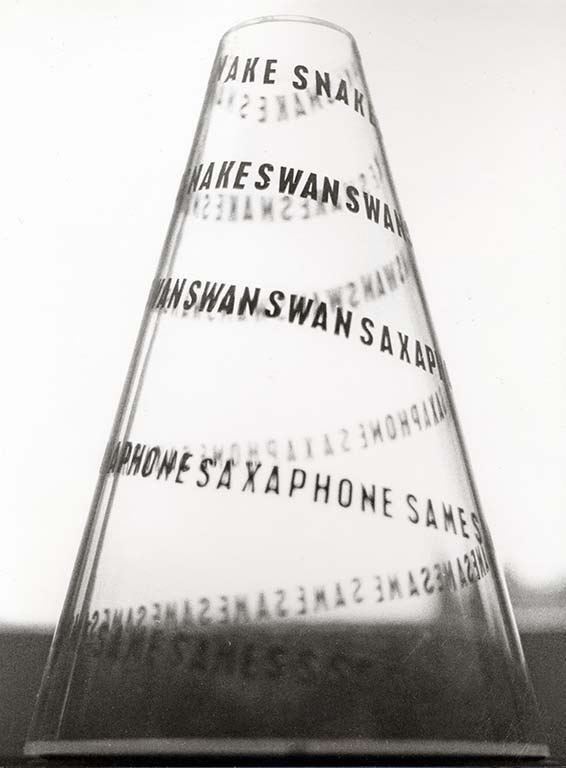
Homage to Charlie Parker, 1968
Lijn wanted the word to be seen in movement, dissolving into a pure vibration until it became the energy of sound.
read more
read more
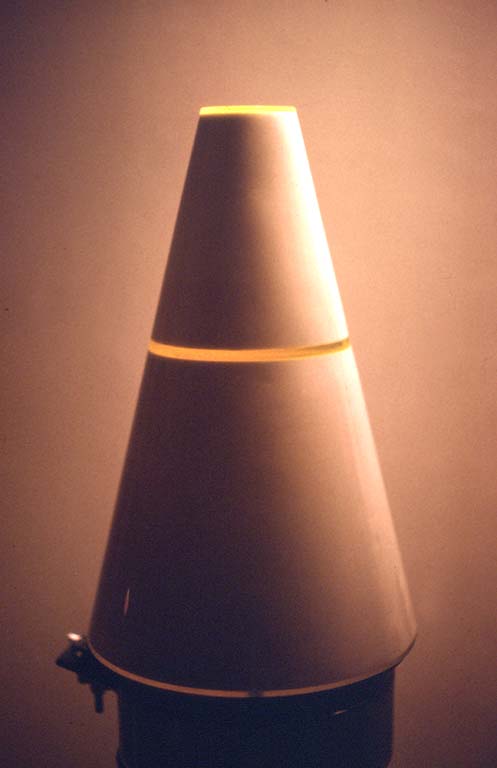
Green Line Cone, 1968
In Green Line Cone and in Breathing Cone Lijn found that by altering the way she passed light through Perspex, either through the edge or through the sheet, the quality of light changed dramatically.
read more
read more
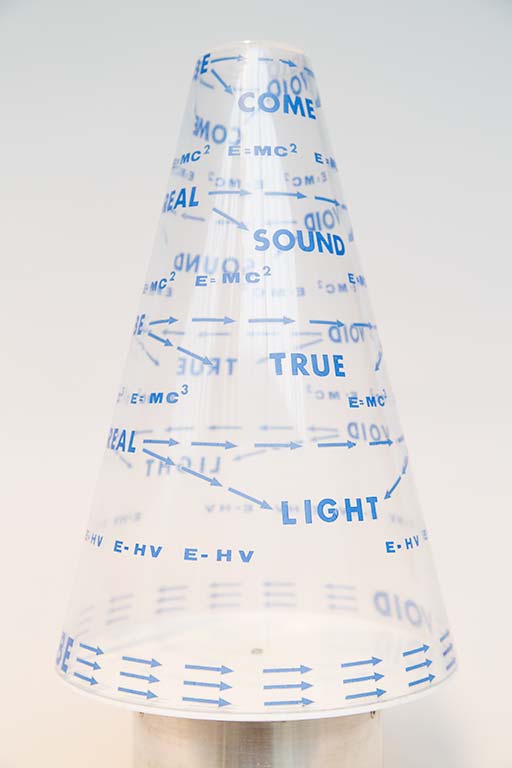
E=mc3, 1968
Text collaboration between Liliane Lijn and Nazli Nour.
read more
read more
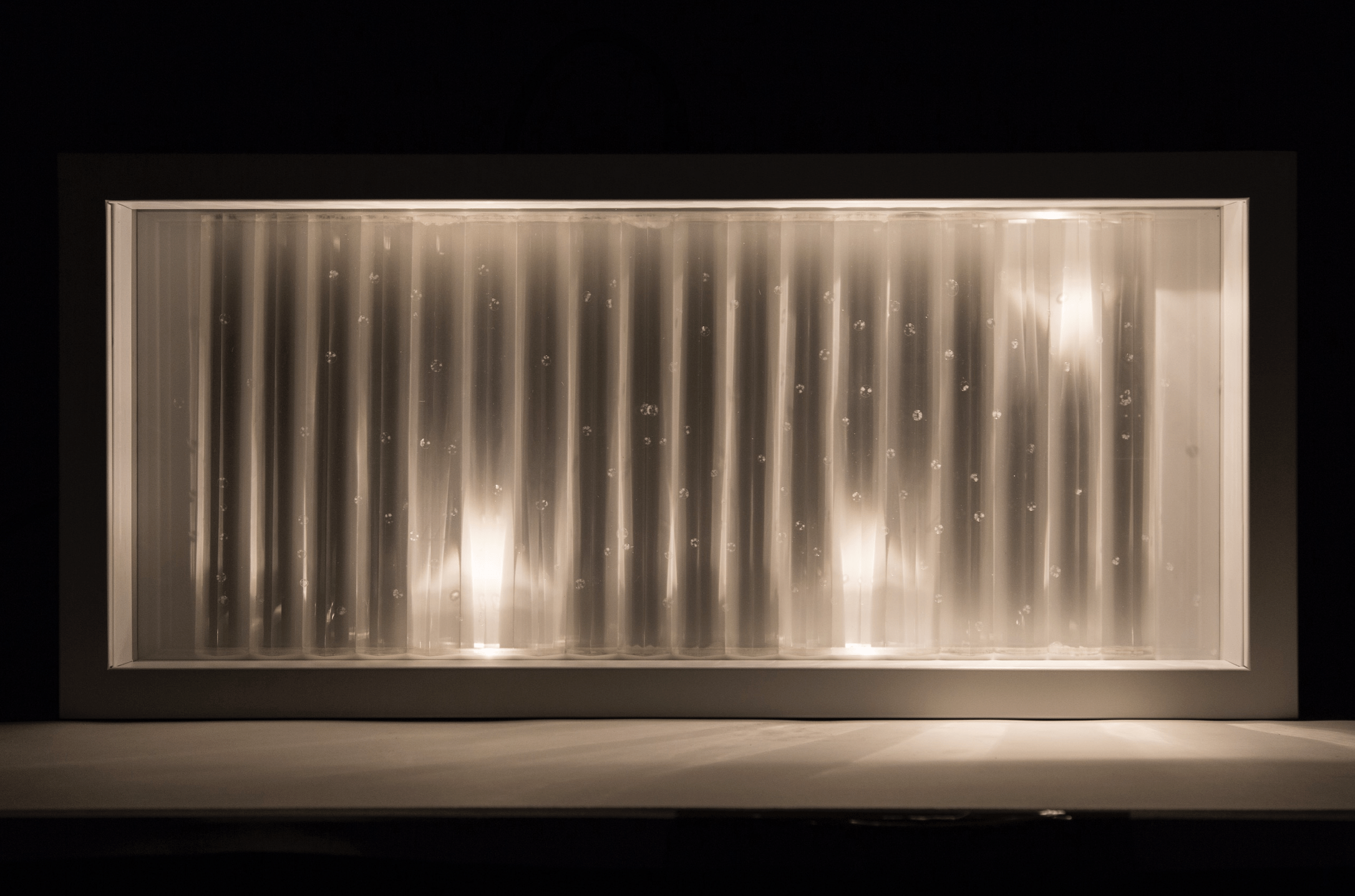
Prism Flares, 1967
In 1965 Lijn began to fabricate framed wall sculptures using thin acrylic sheets as surfaces and incorporating within the frame numerous small spotlights that were programmed to turn on and off sequentially to change the angle of incident light illuminating the surface.
read more
read more
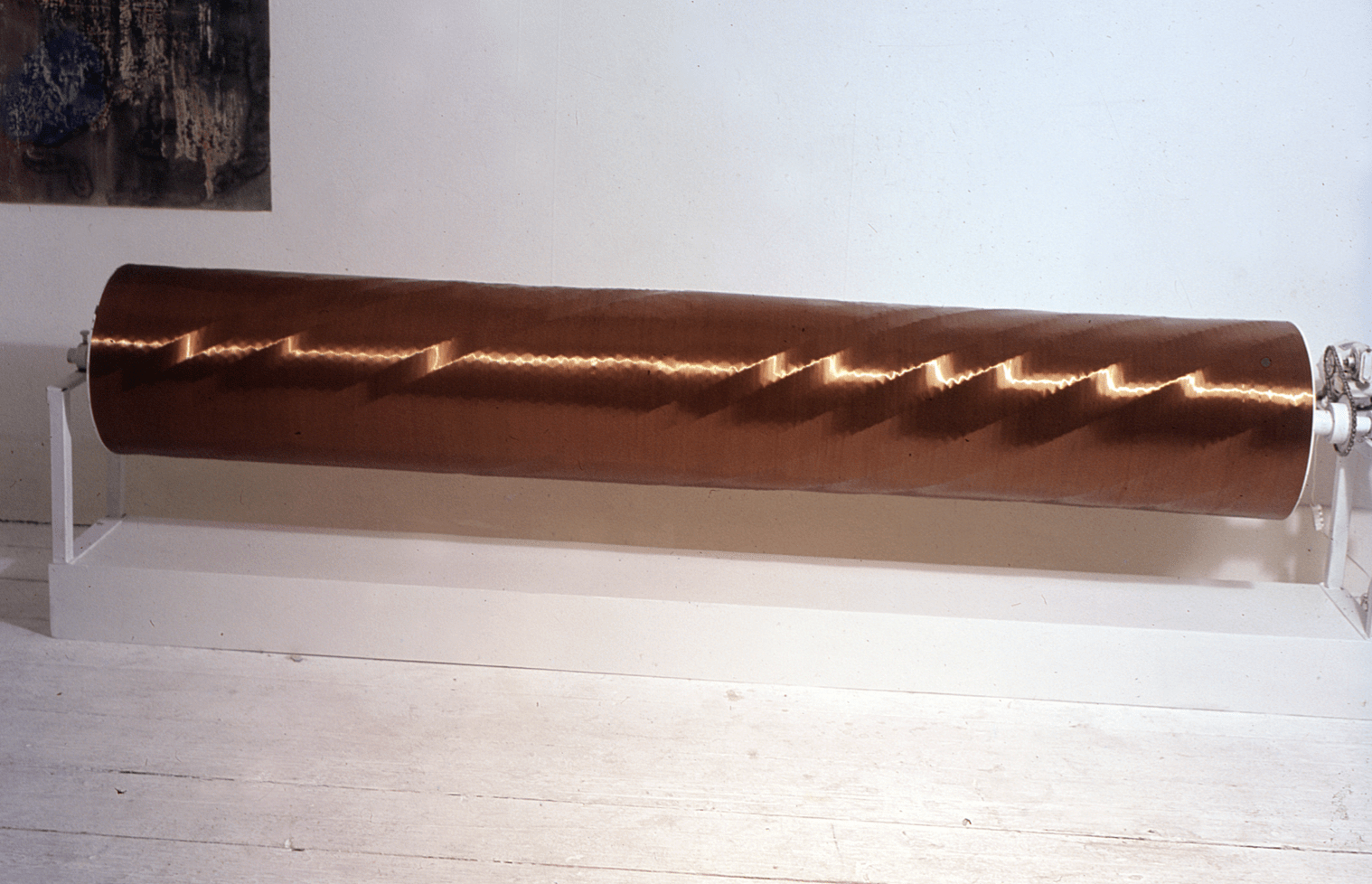
Linear Light Cylinder, 1967
This was the first large Linear Light Cylinder Lijn made. In this work, which is one of the rare horizontal cylinder pieces, the mechanism is left visible.
read more
read more
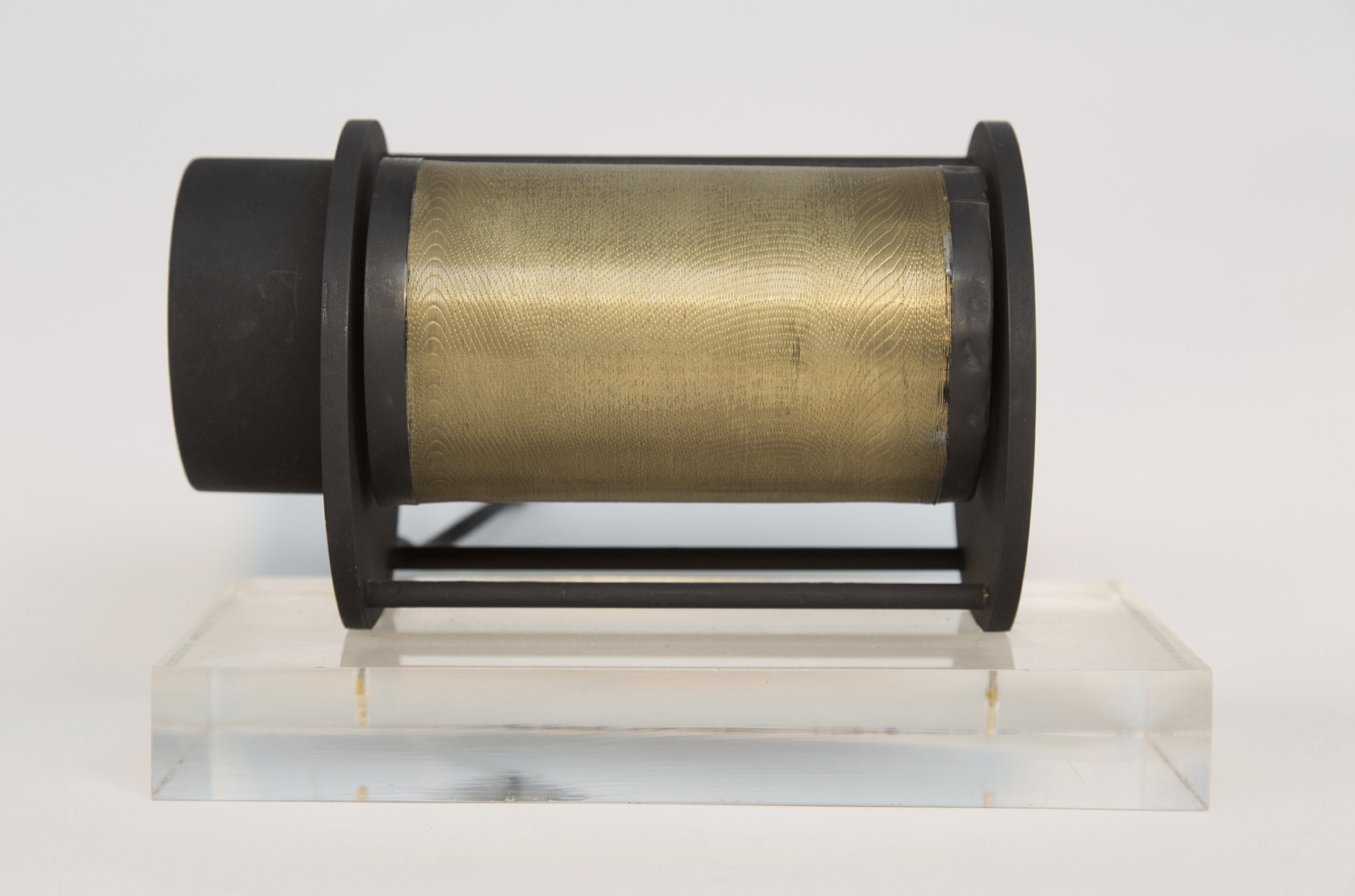
Gold Cylinder, 1964/1967
Lijn was interested in the way a reflected line of light describes the altered surface of the cylinder and gives precise information about any changes made to its surface.
read more
read more
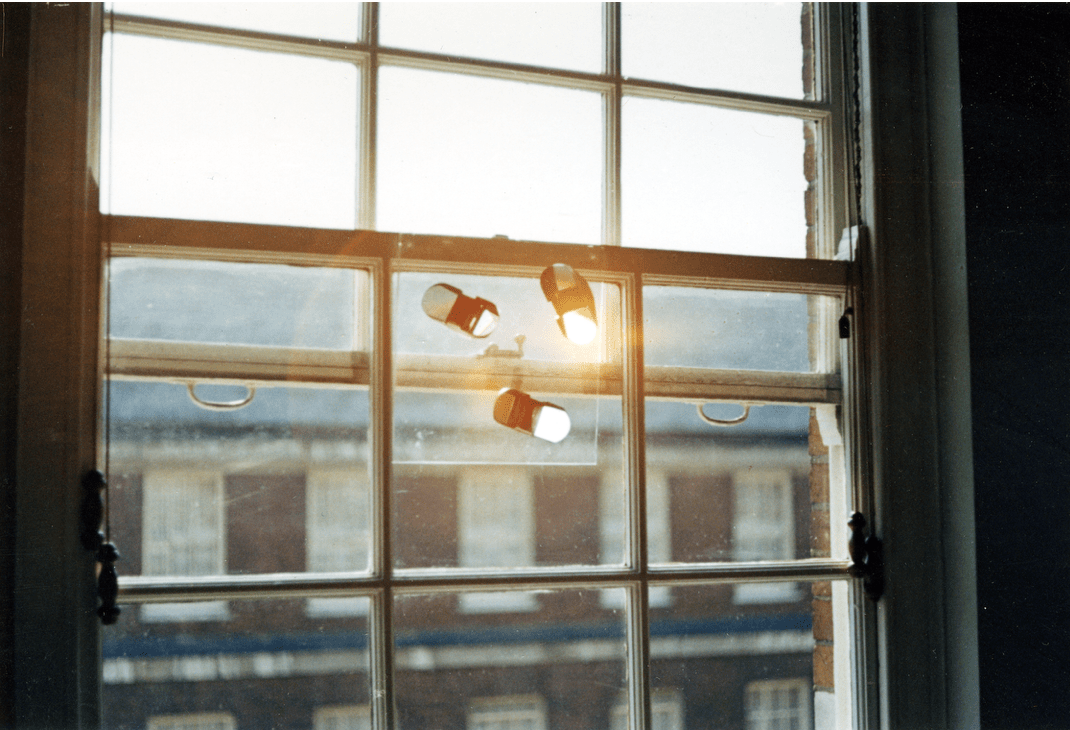
Sunray, 1967
Lijn was fascinated by the use of prisms as tools for vision in both industry and war. Here were materials which were used both for destruction and creation. Not only that, they were real tools for vision, enabling people not only to see and sight from within bind boxes, but also to see within solid matter by analysing the spectrum of light given off by gases, for example in distant stars.
read more
read more
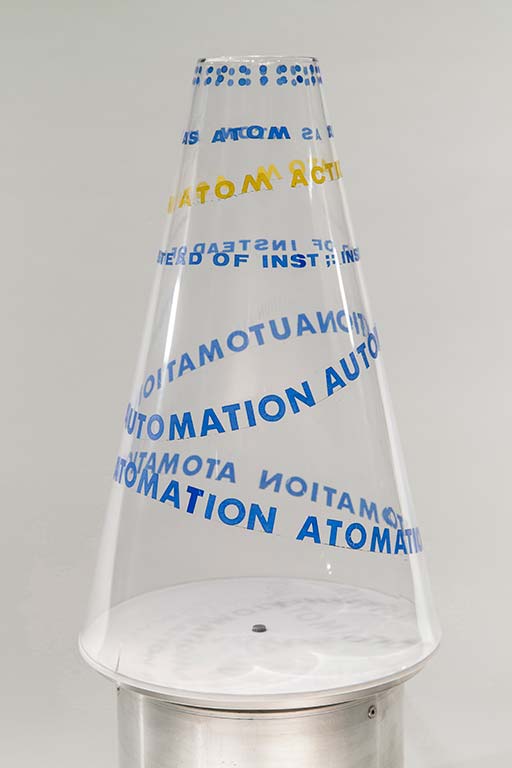
Act as Atom, 1966
Poemcons present words as movement, sound and light.
read more
read more
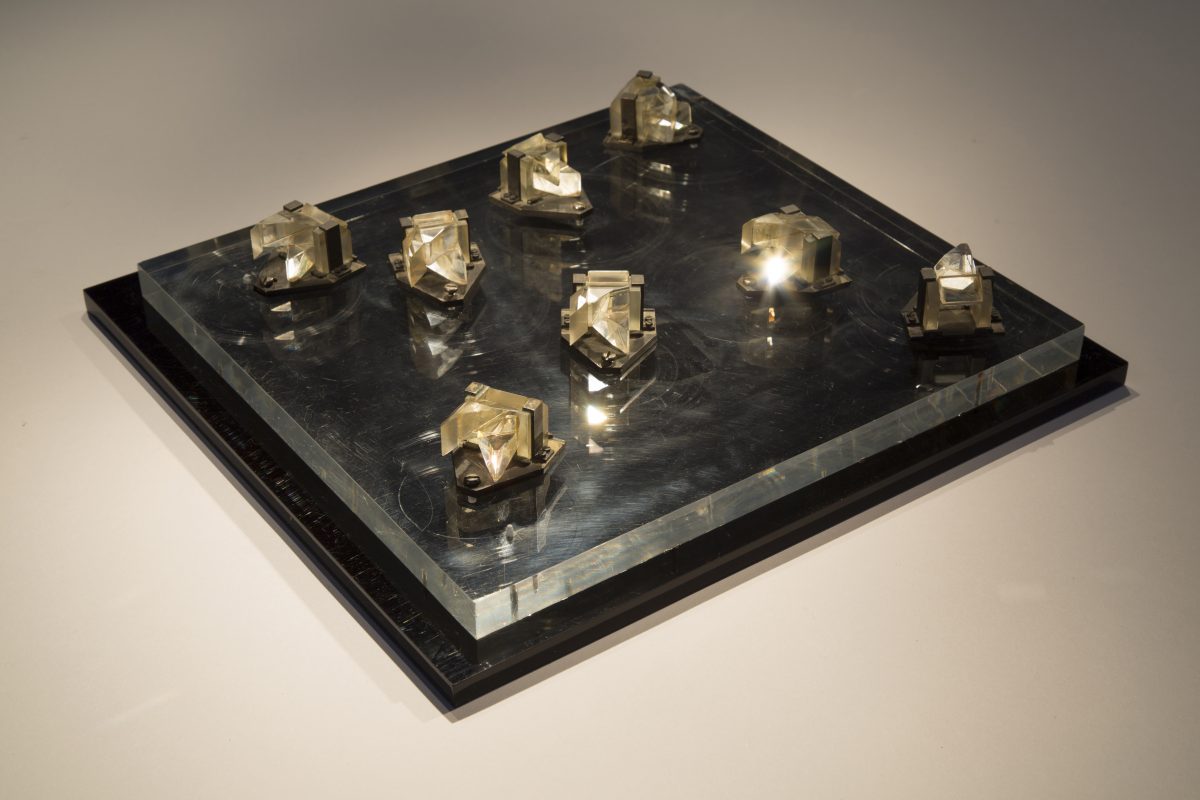
Spectrum, 1966
Lijn was fascinated by the use of prisms as tools for vision in both industry and war. Here were materials which were used both for destruction and creation. Not only that, they were real tools for vision, enabling people not only to see and sight from within bind boxes, but also to see within solid matter by analysing the spectrum of light given off by gases, for example in distant stars.
read more
read more
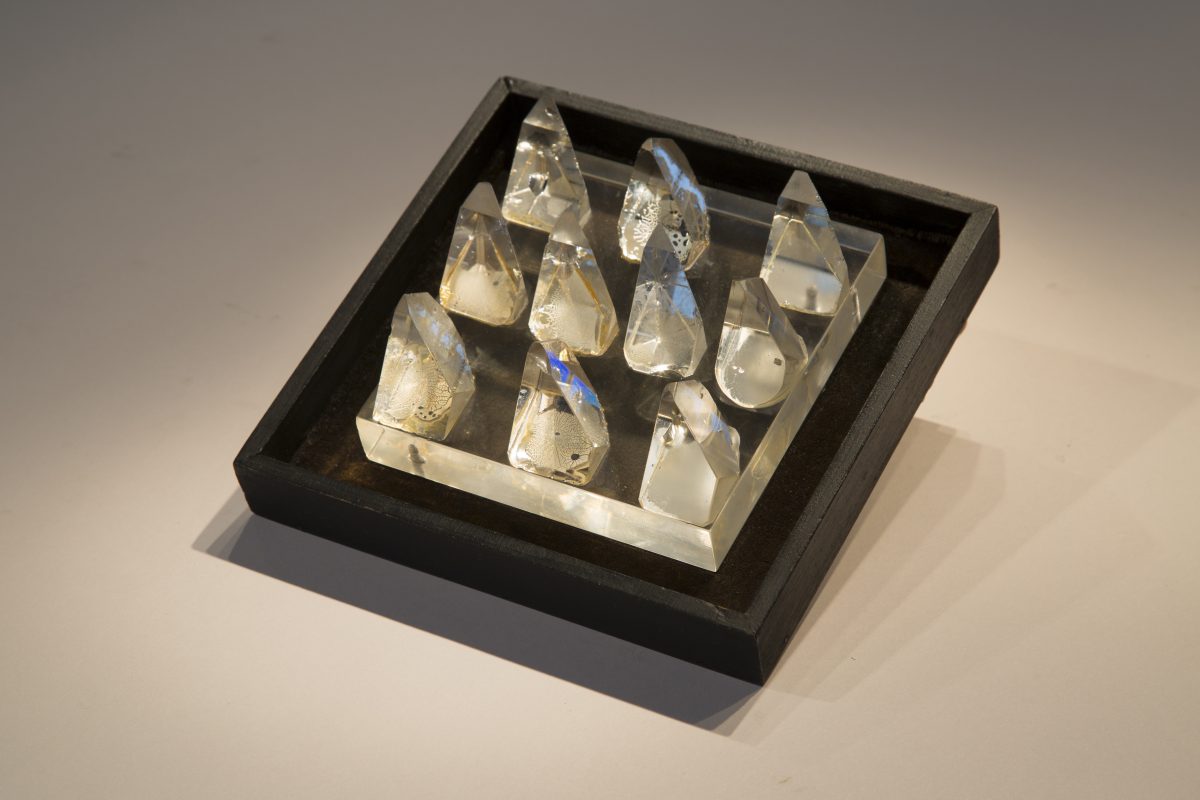
Rays, 1966
Lijn was fascinated by the use of prisms as tools for vision in both industry and war. Here were materials which were used both for destruction and creation. Not only that, they were real tools for vision, enabling people not only to see and sight from within bind boxes, but also to see within solid matter by analysing the spectrum of light given off by gases, for example in distant stars.
read more
read more
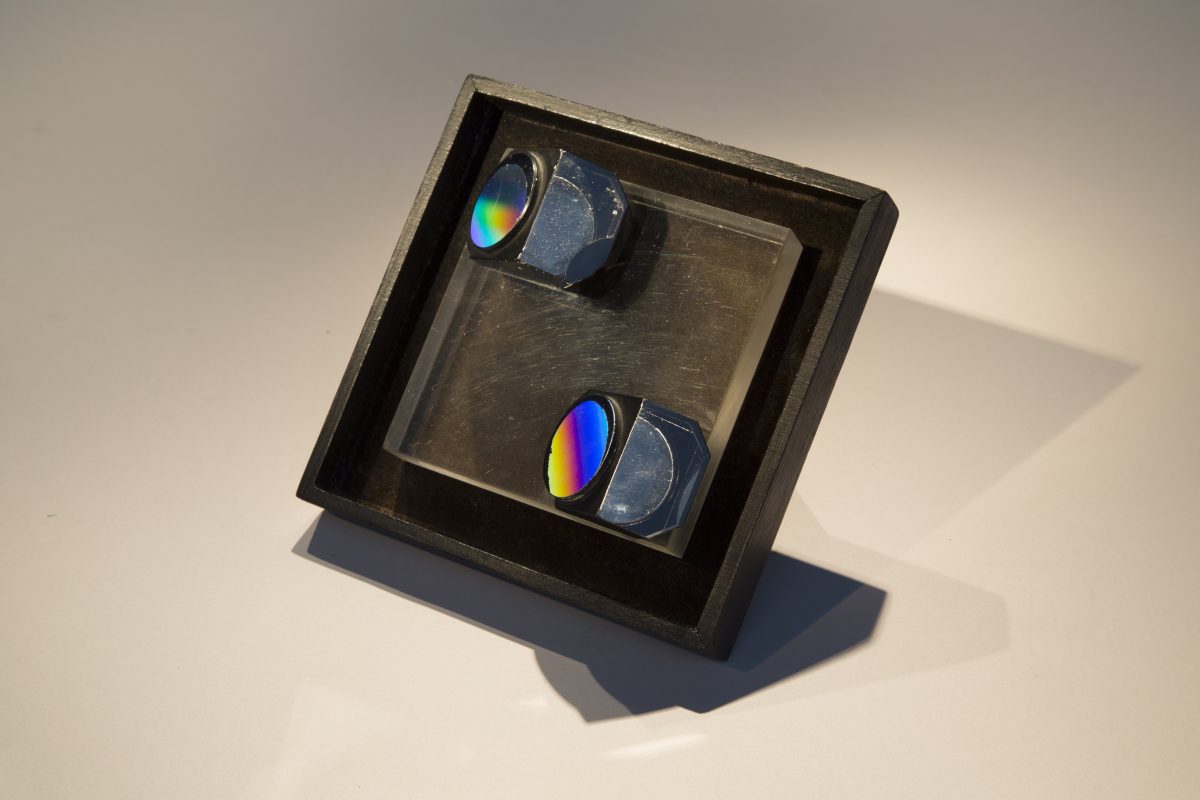
Periscope Eye, 1966
Lijn was fascinated by the use of prisms as tools for vision in both industry and war. Here were materials which were used both for destruction and creation. Not only that, they were real tools for vision, enabling people not only to see and sight from within bind boxes, but also to see within solid matter by analysing the spectrum of light given off by gases, for example in distant stars.
read more
read more
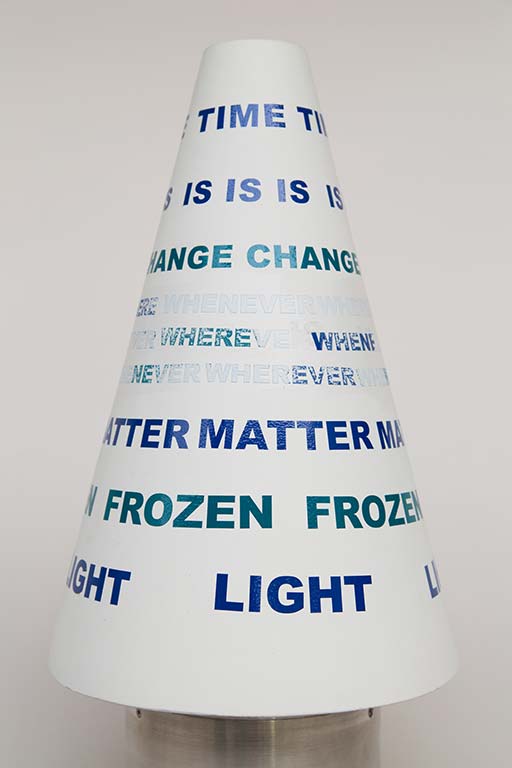
Time Is Change, 1966
Poemcons present words as movement, sound and light.
read more
read more
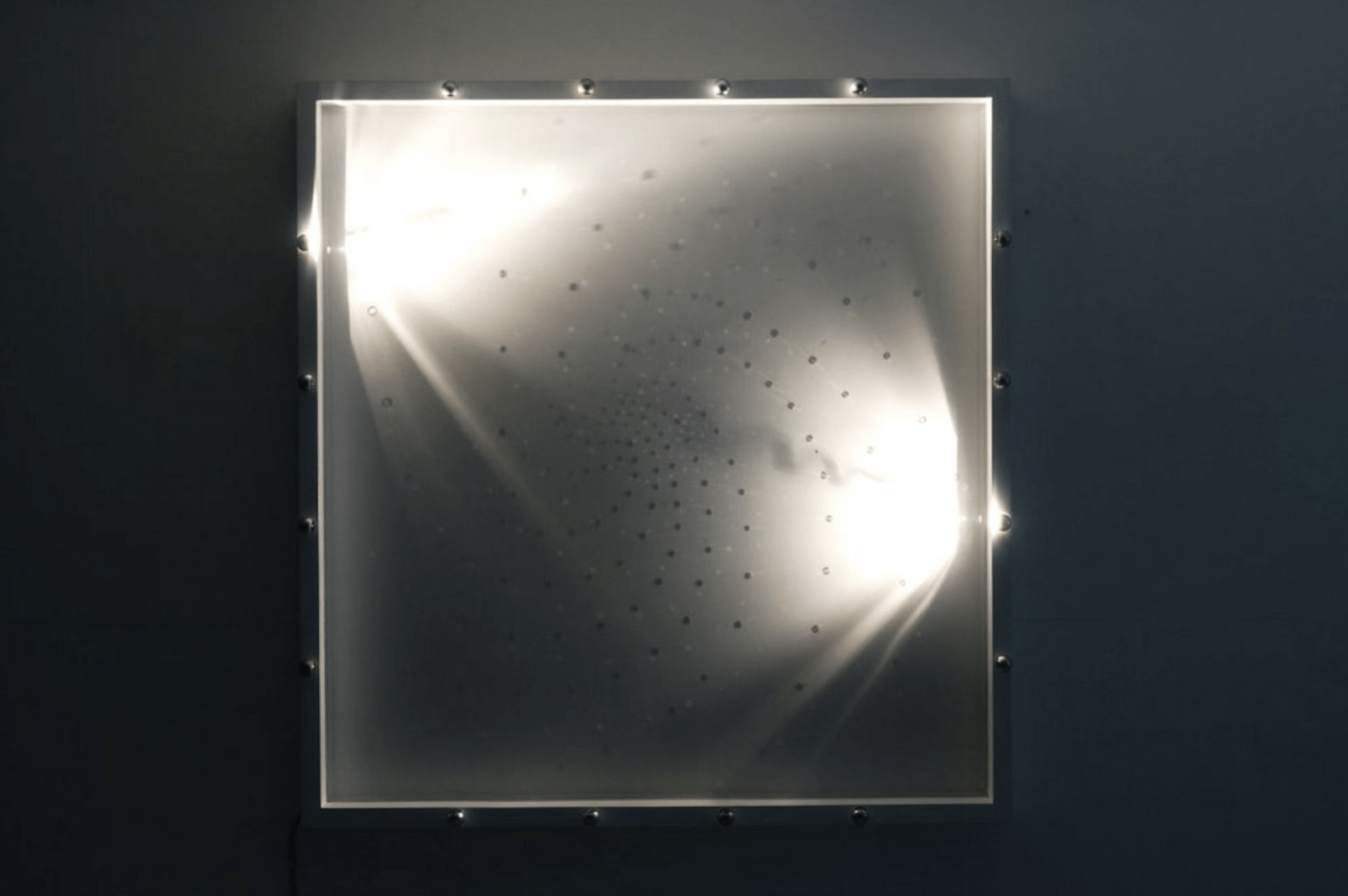
Cosmic Flares III, 1966
In 1965 Lijn began to fabricate framed wall sculptures using thin acrylic sheets as surfaces and incorporating within the frame numerous small spotlights that were programmed to turn on and off sequentially to change the angle of incident light illuminating the surface.
read more
read more
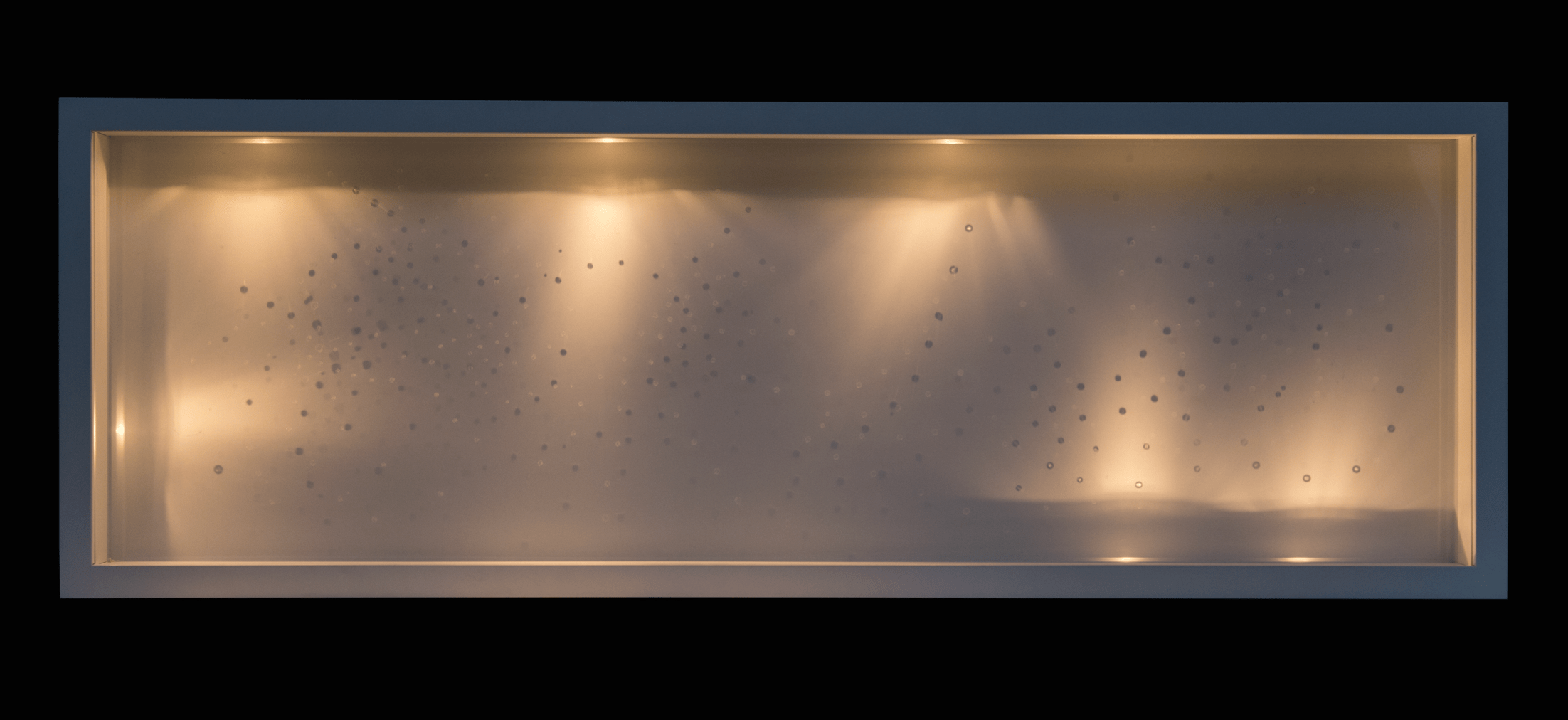
Cosmic Flares II, 1966
In 1965, Lijn began to fabricate framed wall sculptures using thin acrylic sheets as surfaces and incorporating within the frame numerous small spotlights that were programmed to turn on and off sequentially to change the angle of incident light illuminating the surface.
read more
read more
